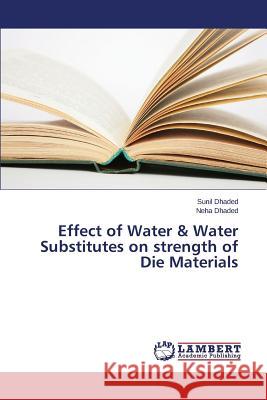Effect of Water & Water Substitutes on strength of Die Materials » książka
Effect of Water & Water Substitutes on strength of Die Materials
ISBN-13: 9783659480942 / Angielski / Miękka / 2015 / 84 str.
Gypsum and its products have been used since centuries. In dentistry it served mainly for the purpose of making models and as an adjunct to various dental laboratory operations that are involved in the fabrication of various oral and maxillofacial prosthesis. Both gypsum and non-gypsum materials are used for making dies. Die materials tend to fracture while separating from elastomeric impressions especially made of long and narrow tooth preparations. Therefore, the exact time period for retrieval of the cast from the impressions is critical. At the same time casts are subjected to considerable flexural constraints when removed from impressions.The strength of the die material is also reported to be dependent on the type and amount of water and water substitutes used. The strength of the gypsum product is generally expressed in terms of compressive strength. Compressive strength gives a better indication of surface hardness. The higher the compressive strength of the hardened mass, the higher the surface hardness.Maximum hardness and resistance to abrasion are reached once the dry strength has been attained.
Gypsum and its products have been used since centuries. In dentistry it served mainly for the purpose of making models and as an adjunct to various dental laboratory operations that are involved in the fabrication of various oral and maxillofacial prosthesis. Both gypsum and non-gypsum materials are used for making dies. Die materials tend to fracture while separating from elastomeric impressions especially made of long and narrow tooth preparations. Therefore, the exact time period for retrieval of the cast from the impressions is critical. At the same time casts are subjected to considerable flexural constraints when removed from impressions.The strength of the die material is also reported to be dependent on the type and amount of water and water substitutes used. The strength of the gypsum product is generally expressed in terms of compressive strength. Compressive strength gives a better indication of surface hardness. The higher the compressive strength of the hardened mass, the higher the surface hardness.Maximum hardness and resistance to abrasion are reached once the dry strength has been attained.











